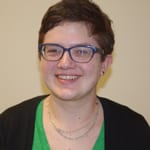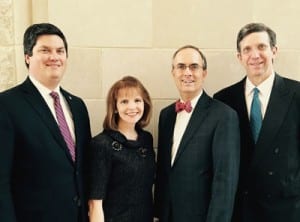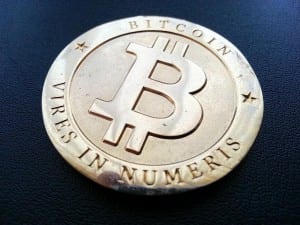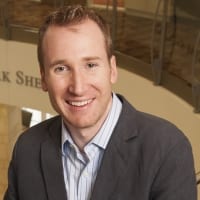Games let people experience the unknown and unfamiliar in a virtual world, and have the power to engage their users.
SMU’s engineering students will help test a new virtual reality game that will someday be rolled out to classrooms everywhere to help students design, inspect and test geotechnical — soil and rock — systems virtually.
SMU will receive $80,000 in funding as part of a larger $650,000 grant from the National Science Foundation, which was awarded to professors at Rensselaer Polytechnic Institute, Troy, N.Y.
Called Geo Explorer, the game places students in a virtual field-testing experience to learn how to use the instrument and interpret its results, said Usama El Shamy, associate professor, department of civil and environmental engineering, SMU Lyle School of Engineering.
“Nowadays, Students get hands-on lab experiences testing element-level samples in geotechnical engineering classes,” said El Shamy. “When it comes to field testing, they only see images of the instrument and deal with raw test data.”
The game will broaden the learning experience considerably.
“The game is intended to place the students in a virtual environment where they can perform the field test, and gather and interpret its data as they play,” he said.
“Other modules of the game will place the student in the position of an engineer inspecting the integrity of a levee after a rain storm. The student should be able to promptly report any warning signs of potential failure of the levee,” El Shamy said. “Failure to do a timely report would result in failure of the levee, or, in other words, game over.”
Mixed-reality and mobile game virtually brings students into the field with immersive learning
Geo Explorer is a mixed-reality and mobile game to virtually bring students into the field to conduct geotechnical site investigations and evaluations. It’s being developed by Rensselaer civil engineering faculty Tarek Abdoun and Victoria Bennett.





“Geo Explorer has a tremendous potential to teach students about the deadly consequences of deteriorating infrastructure,” Bennett said. “Games let people experience the unknown and unfamiliar in a virtual world, and have the power to engage their users.”
The immersive learning from playing Geo Explorer will let students participate in geotechnical field testing, inspect levees during and after extreme storms, assess stability and make decisions about future actions related to flood-control infrastructure.
El Shamy will test the use of the game in SMU’s undergraduate geotechnical engineering classes, which are part of the Lyle School’s civil engineering program, then provide feedback on the game’s design and impact on intended learning outcomes. Preliminary testing of the game in classes will start in April.
A bridge to the lab, Geo Explorer incorporates testing actual soil samples
Geo Explorer also includes a bridge to the actual laboratory. Players will not only use mobile devices, downloading field data, receiving messages from characters and collaborating with classmates, but will test actual soil samples in the lab and can upload results to the game.
Abdoun and Bennett note that natural disasters such as Hurricane Katrina illustrate the serious consequences of a deteriorating infrastructure and a public ill-equipped to respond to weather extremes.
Such challenges cannot be adequately met in the traditional classroom.
Games like Geo Explorer can address the gaps in geotechnical engineering education by providing realistic virtual experience with the unfamiliar, letting participants weigh choices and experience their consequences.
“Ultimately, Geo Explorer will be available for free and be scaled for use by students from kindergarten through high school, particularly in districts with a high percentage of minorities who are underrepresented in technical fields,” Abdoun said.
Concept opens up possibilities for developing games in other areas of science and technology
Geo Explorer is intended to educate the workforce in science, technology, engineering and math, said Rensselaer’s Shekhar Garde, dean of the School of Engineering.
“Geo Explorer has a great potential to educate students about grand challenges in infrastructure resilience, sustainability and stewardship,” Garde said. “It also opens up possibilities for developing games in other areas of science and technology for a range of applications in human health, including chemical and biological safety.”
Funds will be used to utilize the game in a geotechnical course that integrates Geo Explorer. The project builds on game modules developed by Deltares, an institute for applied research in water, subsurface and infrastructure based in the Netherlands.
Besides SMU and Rensselaer faculty, other partners include Casper Harteveld, Northeastern University; Flora McMartin, Broad-Based Knowledge; and Joseph Tront, Virginia Polytechnic Institute and State University; Manhattan College; and California State University Fullerton. — Southern Methodist University, Rensselaer Polytechnic
Follow SMUResearch.com on twitter at @smuresearch.
SMU is a nationally ranked private university in Dallas founded 100 years ago. Today, SMU enrolls nearly 11,000 students who benefit from the academic opportunities and international reach of seven degree-granting schools. For more information see www.smu.edu.
SMU has an uplink facility located on campus for live TV, radio, or online interviews. To speak with an SMU expert or book an SMU guest in the studio, call SMU News & Communications at 214-768-7650.



 Teen girls report less sexual victimization after virtual reality assertiveness training
Teen girls report less sexual victimization after virtual reality assertiveness training Fossil supervolcano in Italian Alps may answer deep mysteries around active supervolcanoes
Fossil supervolcano in Italian Alps may answer deep mysteries around active supervolcanoes SMU seismologist Brian Stump named AAAS Fellow for distinguished scientific contributions
SMU seismologist Brian Stump named AAAS Fellow for distinguished scientific contributions Study: Contraception may change how happy women are with their husbands
Study: Contraception may change how happy women are with their husbands Study funded by NIH is decoding blue light’s mysterious ability to alter body’s natural clock
Study funded by NIH is decoding blue light’s mysterious ability to alter body’s natural clock

 Bitcoin scams steal at least $11 million in virtual deposits from unsuspecting customers
Bitcoin scams steal at least $11 million in virtual deposits from unsuspecting customers
 Jurassic climate of large swath of western U.S. was more complex than previously known
Jurassic climate of large swath of western U.S. was more complex than previously known Study will teach algebra with student-authored stories that draw on their own interests
Study will teach algebra with student-authored stories that draw on their own interests Hunt begins for elusive neutrino particle at one of the world’s largest, most powerful detectors
Hunt begins for elusive neutrino particle at one of the world’s largest, most powerful detectors Key to speed? Elite sprinters are unlike other athletes — deliver forceful punch to ground
Key to speed? Elite sprinters are unlike other athletes — deliver forceful punch to ground Hunt for dark matter takes physicists deep below earth’s surface, where WIMPS can’t hide
Hunt for dark matter takes physicists deep below earth’s surface, where WIMPS can’t hide Marital tension between mom and dad can harm each parent’s bond with child, study finds
Marital tension between mom and dad can harm each parent’s bond with child, study finds
